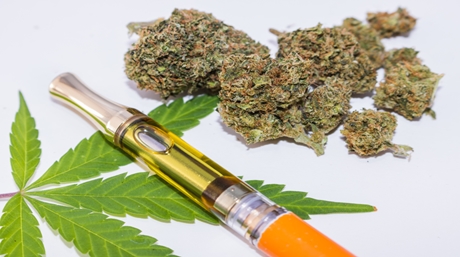Glaucoma is a complex eye disease that poses a significant threat to vision health. It is characterized by increased fluid pressure within the eye, which progressively damages the ophthalmic nerve, leading to vision loss and potential blindness. This condition is predominantly age-related and most commonly affects elderly individuals, with nearly 1% of people over 60 years and over 9% of people over 80 years being affected. In this article, we will explore glaucoma in more detail, focusing on its causes, symptoms, and potential use of marijuana as a treatment option.
Glaucoma is primarily characterized by increased intraocular pressure, which serves as both a symptom and a risk factor for the disease. Elevated intraocular pressure is believed to play a critical role in the progressive deterioration of the ophthalmic nerve. Consequently, many treatments are aimed at reducing intraocular pressure to alleviate the impact on the optic nerve and preserve vision.
Glaucoma is classified into several types, including open-angle glaucoma, angle-closure glaucoma, normal-tension glaucoma, and congenital glaucoma. Each type has specific underlying causes and mechanisms, but they all share the common feature of increased intraocular pressure.

In the state of Arizona, ophthalmologists have recognized that marijuana smoking may be one of the simplest and most natural ways to address glaucoma. Early studies conducted in the 1970s demonstrated that the use of cannabis could effectively reduce intraocular pressure. Subsequently, the US National Eye Institute conducted scientific studies from 1978 to 1984 to evaluate the efficacy of cannabis or its derivatives in treating glaucoma. The findings revealed that certain marijuana derivatives, when administered orally, intravenously, or through smoking, could effectively lower intraocular pressure. However, topical application to the eye did not yield the same results.
The active compounds in marijuana, known as cannabinoids, interact with the body’s endocannabinoid system, which plays a role in regulating various physiological processes. Among these compounds, cannabidiol (CBD) has shown promise when combined with tetrahydrocannabinol (THC) in managing glaucoma. The synergistic effect of CBD and THC is believed to relieve pain, reduce nausea, lower arterial pressure, and notably, decrease intraocular pressure. These properties make cannabis an intriguing option for managing symptoms.
The therapeutic potential of marijuana in glaucoma treatment lies in its cannabinoids, which are special compounds that interact with various physiological processes. Among these compounds, cannabidiol (CBD) has shown promise when combined with tetrahydrocannabinol (THC). The synergistic effect of CBD and THC is believed to relieve pain, reduce nausea, lower arterial pressure, and notably, decrease intraocular pressure. These properties make weed an intriguing option for managing symptoms.
Cannabinoids exert their effects by interacting with cannabinoid receptors present in the eye. By activating these receptors, cannabinoids can modulate the flow of aqueous humor, the fluid that fills the front part of the eye. This modulation can result in a decrease in intraocular pressure, which is beneficial for individuals with glaucoma.
While cannabis shows promise as a treatment, it is important to consider both its benefits and limitations. The ability to reduce intraocular pressure is a significant advantage, as it directly targets the underlying cause of glaucoma progression. Furthermore, marijuana’s analgesic and anti-inflammatory properties can provide relief from associated symptoms such as pain and discomfort.
However, there are limitations to marijuana as a treatment. Firstly, the duration of its effects is relatively short-lived, typically lasting only a few hours. This necessitates frequent administration to maintain the desired therapeutic effect. Secondly, individual responses to weed can vary, and some individuals may not experience a significant reduction in intraocular pressure. Finally, cannabis use can have side effects such as dizziness, dry mouth, and impaired cognitive function, which should be carefully considered.
Glaucoma is a complex eye condition that can lead to vision loss and blindness. While marijuana has shown promise in reducing intraocular pressure, it should not be viewed as a standalone solution. Collaborating with qualified ophthalmologists and healthcare providers is crucial for effective management.
It is essential to emphasize that glaucoma patients should not self-medicate with marijuana without proper medical guidance. While medical weed has gained recognition in various regions, consultation with a healthcare professional specialized in its use is vital. These professionals can offer valuable insights on dosage, administration methods, and potential side effects.
By working closely with healthcare providers, patients can develop personalized treatment plans tailored to their specific needs. This comprehensive approach combines traditional treatments, such as eye drops and surgeries, with the potential benefits of cannabis. Regular monitoring by ophthalmologists ensures that the treatment remains effective and adjustments can be made as necessary.
Medical guidance is crucial in navigating the complexities of glaucoma management and incorporating pot as a potential treatment option. Through collaboration with healthcare professionals, patients can optimize their treatment outcomes and enhance the preservation of their vision. It is important to prioritize safety and effectiveness by seeking expert advice before incorporating marijuana into the treatment regimen.
Conclusion:
Glaucoma is a serious eye disease that affects a significant portion of the elderly population. While marijuana has shown promise in reducing intraocular pressure and managing symptoms, it is important to approach its use with caution. Medical guidance and professional supervision are essential to ensure proper management of the disease and minimize potential risks associated with cannabis use. As research continues, further understanding of marijuana’s efficacy and optimal utilization in glaucoma treatment may emerge, offering hope for improved quality of life and vision preservation for those affected by this condition.
Disclaimer:
This article is for informational purposes only and does not constitute medical advice. The content is not intended to be a substitute for professional medical guidance, diagnosis, or treatment. Always seek the advice of a qualified healthcare provider with any questions you may have regarding glaucoma or any other medical condition.













Related Posts

Margo and Sjef, a congenial couple from Bertogne, Belgium, have been happily married for over 40 years. Their life has been a vibrant tableau, an epitome of a love that has grown and adapted through the decades. With two daughters who have families of their own, Margo and Sjef have been able to enjoy the joys of grandparenthood while still maintaining…

We all know that antioxidants have a positive effect on the human body. But what about antioxidants in Marijuana? Read all about Cannabinoids in cannabis and their antioxidant effects.

CBD, a non-intoxicating component of cannabis, is noted for its therapeutic properties, offering relief from anxiety and other conditions without the side effects of THC. High-CBD seeds, legal in areas where medical cannabis is permitted, are a popular choice for those seeking natural remedies. These seeds are designed to maximize the therapeutic potential of CBD, making it easy to grow CBD-rich plants for medicinal use.